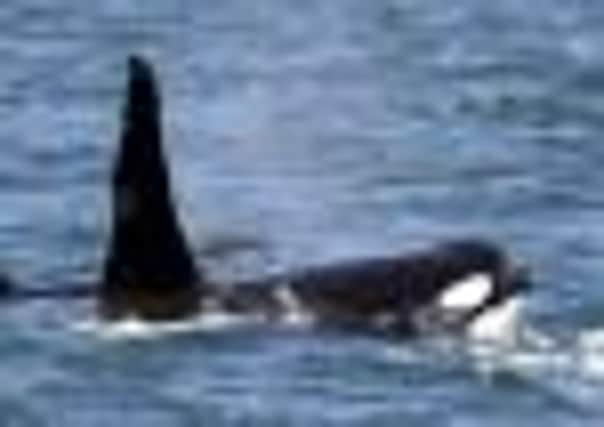Outdoors: Whale watching


Even for seasoned killer whale experts such as Dr Volker Deecke of the University of Cumbria, standing upon a windswept headland in Shetland and catching a glimpse of the shiny backs of these top predators arching their way through the waves is enough to send a tingle down the spine.
“You do have to be extremely lucky to see them, but when you do it is an amazing experience that is well worth the time and effort,” he says.
Advertisement
Hide AdDeecke has been studying killer whales around Shetland for the last few years and his work, combined with that of other researchers, is building a picture of the status of killer whales in Scotland. They are extremely difficult animals to survey, given the vastness of their haunts and the difficulty in detecting them in choppy sea conditions, but some information about their habits and numbers is now starting to emerge, especially for those that frequent inshore areas.
Every killer whale has a unique dorsal fin shape and saddle patch shape, which together with nicks and scratches, has made it possible to identify individuals and build up a picture of social structure and numbers. There are two different groups of killer whales found in Scottish waters – those that feed predominately inshore on seals, and animals that are more commonly found offshore and specialise in preying upon pelagic fish such as mackerel and herring.
Numbers of seal-eating killer whales do appear to be stable, with estimates of 30 to 40 around Shetland and Orkney. These animals form small sub-groups that consist of a female and two or three generations of her offspring, which hunt as a unit. “These seal-eating killer whales often hunt very close to the shore and roam over a wide area of northern Scotland from Shetland and Orkney and right across to St Kilda,” says Deecke.
Indeed, they may even on occasion roam further south and a few years ago a group of killers took up residence in the Firth of Forth for several weeks and stunned onlookers, who were able to get great views of the animals hunting for seals below the road and rail bridges.
The fish-eating killer whales that venture into Scottish waters are thought to be from nomadic populations around Iceland and Norway which follow the migratory patterns of oil-rich herring and mackerel. Herring-eating killer whales use a characteristic loud call to either disorientate or frighten the fish into tight defensive shoals that are then stunned by tail-slapping by the killers, who move in quickly to snap up the immobilised fish.
Deecke’s specialist field is whale acoustics and he says it is interesting to note the big differences between the seal and fish-eating killer whales. “The fish-eating whales are very noisy and call much of the time, whilst those that specialise in seals hardly ever call at all, probably because they need real stealth to approach close to seals.
Advertisement
Hide Ad“We have occasionally seen fish-eating and seal-eating killer whales relatively close to each other, but there was no interaction between the two groups.”
Deecke says it is likely that such different feeding techniques have evolved over generations, with the adults passing on their knowledge to younger whales.
Advertisement
Hide AdThe huge public interest in killer whales has provided a real boost to the tourist industry in Shetland, with many people visiting the islands in the hope of seeing them. Persistence and a certain amount of luck are certainly required to catch a glimpse of these magnificent predators. However, if the whales do prove elusive, there is so much other wildlife around, including otters and a vast array of seabirds, that a trip to Shetland never disappoints.